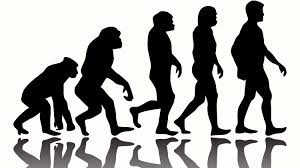Give Me that That Ole Time Religion?: On Differences and Similarities
 A long time ago one of the most influential scientists in behavior analysis, Murray Sidman wrote on the subject of comparative psychology that differences between species were easy to find, but, he suggested, science advances and achieves greater integration of concepts on the basis of finding similar behavioral processes among species or phenomena that are, on the face of it, disparate. It seems reasonable to extend Sidman’s astute observation to other things related to the human condition.
A long time ago one of the most influential scientists in behavior analysis, Murray Sidman wrote on the subject of comparative psychology that differences between species were easy to find, but, he suggested, science advances and achieves greater integration of concepts on the basis of finding similar behavioral processes among species or phenomena that are, on the face of it, disparate. It seems reasonable to extend Sidman’s astute observation to other things related to the human condition.
 A prime example is the ancient tuft between religion and science. In the eyes of many people, these two have been at one another’s philosophical throats since time immemorial. The evolutionary biologist and popular science writer Stephen Jay Gould wrote a book on the subject, concluding that the two constituted “nonoverlapping majesteria” and argued for a kind of intellectual détente between the two, with each marking out its own territory and basically staying out of the way of the other. I suggest that a more useful approach is to follow Sidman’s model.
A prime example is the ancient tuft between religion and science. In the eyes of many people, these two have been at one another’s philosophical throats since time immemorial. The evolutionary biologist and popular science writer Stephen Jay Gould wrote a book on the subject, concluding that the two constituted “nonoverlapping majesteria” and argued for a kind of intellectual détente between the two, with each marking out its own territory and basically staying out of the way of the other. I suggest that a more useful approach is to follow Sidman’s model.
 First, a caveat. “Science” and “religion” are both immense categories that cut across many dimensions. On the one hand, for example, there are religions that come close to a deterministic stance and others that are antithetical to that cornerstone of scientific thinking and analysis. On the other hand, the idea of determinism itself has taken some very different – as some have observed, almost mystical twists – when it comes to the behavior of subatomic particles.
First, a caveat. “Science” and “religion” are both immense categories that cut across many dimensions. On the one hand, for example, there are religions that come close to a deterministic stance and others that are antithetical to that cornerstone of scientific thinking and analysis. On the other hand, the idea of determinism itself has taken some very different – as some have observed, almost mystical twists – when it comes to the behavior of subatomic particles.
Science was described by Skinner as the verbal behavior of the scientist. In a 1984 article, he made the following point: “The formula s= ½gt2 does not govern the behavior of falling bodies, it governs those who correctly predict the position of falling bodies at given times.” That is, the formula controls the actions of the scientist, it determines what she will do next. By the same token, religion involves people interacting about things that matter to them. What is said by religious leaders and what is written in sacred texts influences (determines?) what people will do next. It is hard to ignore the commonalities between the behavioral processes operating in science and religion.
 What about the content of religious verbal behavior and scientific verbal behavior? Are there commonalities there too? Just as some particle physicists have pointed out common ground between particle physics and some Eastern religions, some behavior analysts have suggested common ground between those same religions and behavior analysis. There are, of course, many differences, some irreconcilable perhaps. But by seeking the commonalities at both the level of behavioral process and content, behavior analysis stands a better chance of connecting itself to other, longer standing world intellectual traditions, rather than isolating itself further and further from the mainstream. Surely there are things to be learned from world views that have influenced millions upon millions of people over many centuries. Our pragmatic goal is to make a difference in the world. That goal is hard to achieve if we behavior analysts see only differences between ourselves and the world as it is.
What about the content of religious verbal behavior and scientific verbal behavior? Are there commonalities there too? Just as some particle physicists have pointed out common ground between particle physics and some Eastern religions, some behavior analysts have suggested common ground between those same religions and behavior analysis. There are, of course, many differences, some irreconcilable perhaps. But by seeking the commonalities at both the level of behavioral process and content, behavior analysis stands a better chance of connecting itself to other, longer standing world intellectual traditions, rather than isolating itself further and further from the mainstream. Surely there are things to be learned from world views that have influenced millions upon millions of people over many centuries. Our pragmatic goal is to make a difference in the world. That goal is hard to achieve if we behavior analysts see only differences between ourselves and the world as it is.



